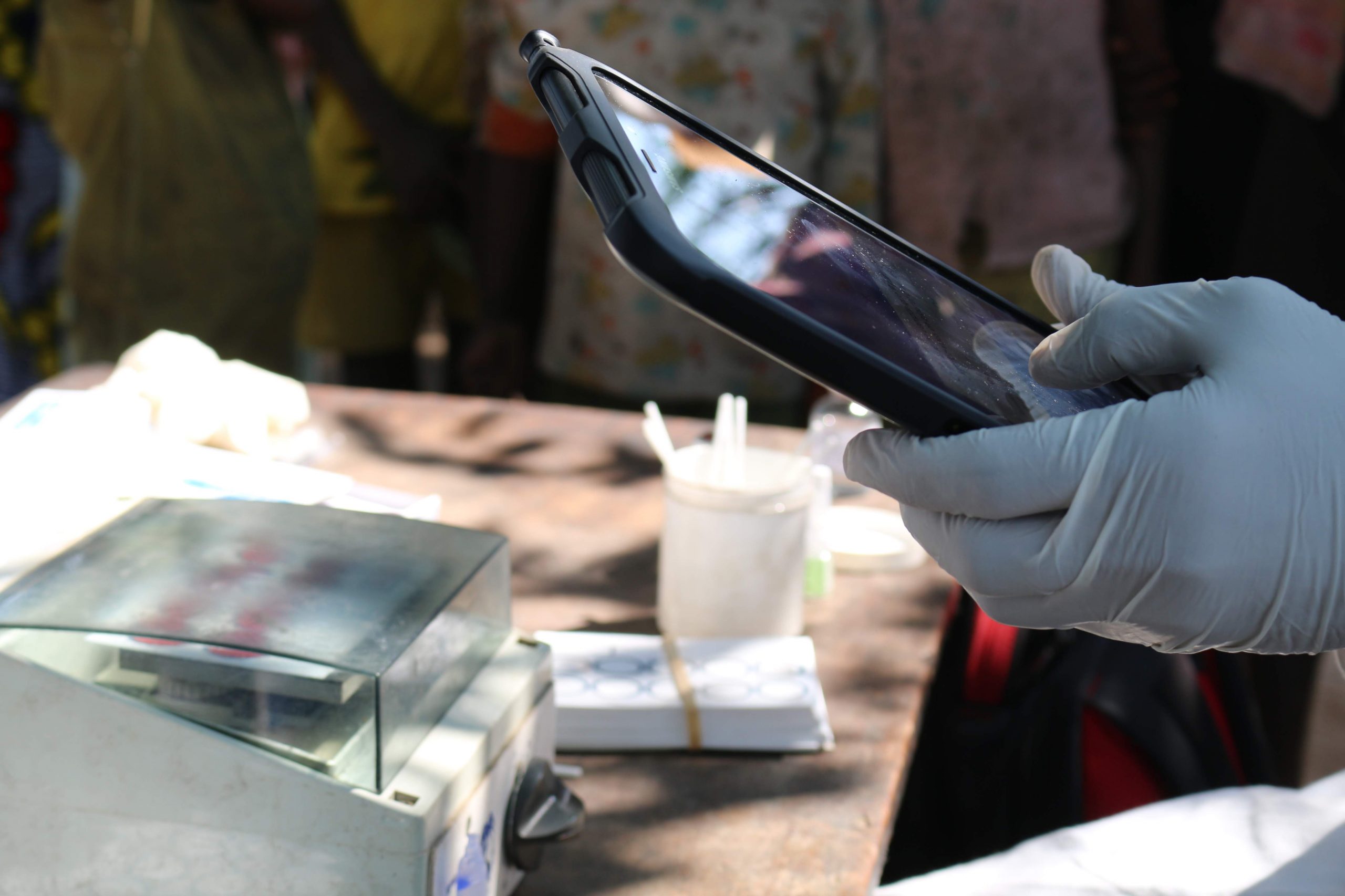
Sleeping Sickness is a parasitic disease transmitted by the tsetse fly. It is lethal in most cases. The disease has been an important cause of death in sub-Saharan Africa over the past century.
Professor Marleen Boelaert and her team from the Institute of Tropical Medicine (ITM) in Antwerp, Belgium, recently launched a new project to reach the global targets for eliminating sleeping sickness. ITM researches new ways to combat the disease. It is in charge of an international elimination initiative in DRC, financed by the Belgian Development Cooperation and the Bill & Melinda Gates Foundation. They are working with several partners. One of them is PNLTHA, the National Program against Sleeping Sickness in the DRC.
The project focusses on improved medication and testing, smaller and more effective fly traps and on digital data processing. You can read more about the ITM project here: https://www.itg.be/E/sleeping-sickness
Bluesquare has been working with ITM to develop and enhance the existing data processing tools, which includes two main parts:
The mobile application is used on Android tablets to collect data about diagnostic tests performed in villages in DRC.
The paper based processes that have been in use, with good results, in the DRC over the years, have the drawbacks of requiring that all the information be gathered physically at a central level and letting spelling errors in names of places slip through. These factors make it more difficult to produce geographically grouped reports.
The mobile application replaces those processes and provides multiple advantages:
These advantages are very important and justify the use of digital tools over the traditional paper approach, but the use of a tablet application has its own challenges to overcome.
First, it requires electricity. This has been solved by using solar panels.
Second, it needs to work offline, with the absence of internet connection in most of the DRC. Then when the tablet user reaches a place where internet connectivity is available, it needs to be able to synchronize all the collected data with a central server, securely.
Third, the process must not break the workflow of existing testing teams, and be, whenever possible, as convenient as the paper based processes.The teams are used to working in parallel with encoders for the patient names, with the testers when collecting blood and finally with the verifiers to proceed to additional tests in case of a first positive diagnostic test. We are tackling these problems by using NFC and Bluetooth synchronization between tablets to avoid multiple encoding at the different stages of the process. The advantage of these technologies is that they do not require internet connectivity to transfer data between devices.
The dashboard offers many features aimed for use by the PNLTHA members.
First and foremost, it collects all the data about the tests performed in the field. These have been encoded either through the mobile application or through various Microsoft Access files over the years. This makes it a comprehensive electronic record of all recent sleeping sickness cases in the DRC. Our team worked hard to ensure that this data is as clean as possible. This allows us to match cases with the location where they have occurred and been diagnosed, and to ensure that no case is either forgotten or encoded twice. We are also making progress on making links between various tests performed on a given patient.
In the end, the keyword here is traceability. We want to allow users to easily recover any information on a test. For example, in which village, by which PNLTHA member and on exactly which date. Tablets collect dates and GPS coordinates during encoding. The dashboard then uses this data to navigate test information.
Second, it includes tools to track the progress of the testing work in the field. It displays which tablets have been doing which test, when and where. Statistics about the tests campaign can be viewed online in these tools.
Third, in the very near future, the dashboard will allow us to proceed to quality controls at various levels, by allowing officials of the PNLTHA to see pictures and videos of field tests and double check the diagnoses.
Fourth, the dashboard offers tools to plan the work of testers in the field. Simultaneously, they optimize the travels of the teams and the epidemiological efficiency. This is crucial in the last steps towards eliminating of the sickness. Tracking down the last cases requires a level of accuracy that was not really needed in the past, when more broadly cast surveillance networks have done their job efficiently.
All these features are provided while ensuring granular access control. All users of the systems only get access to the parts that are relevant to their work. Notably, they only have access to the geographical regions that they are in charge of.
For the android application, we use Cordova, React, and various libraries for NFC, USB storage (for backup) and external USB camera support. The data is stored in Couchdb, which allows relatively easy replication between devices and the servers.
The online dashboard is written in Python using the Django framework, with the frontend using React, Leaflet for the maps, and d3.js for data visualization.
We are making progress on all aspects of the digital tools for the elimination of the sleeping sickness in the DRC project. Overall, we seem to get a good adoption rate of the tools by the different teams. This is always a major challenge for any digitization project. It is attained through constant feedback loops with people in the field and rapid adaptation of the tools to the needs expressed. Already, hundreds of thousands of tests have been recorded and made available for statistical analysis.
We would like to thank the members of the PNLTHA for their willingness to test the tools and to give feedback. We also thank the ITM for trusting us with this important and challenging project.